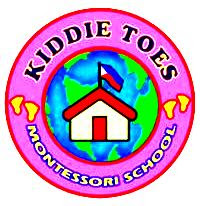
Kiddie Toes Montessori School (KTMS) lower elementary learners are taught using the PROJECT APPROACH.
The Project Approach, as practiced in early childhood, elementary, and middle level education, is an in-depth study of a topic undertaken by a class, a group of children, or an individual child.
Although project work is not new to early and elementary education, interest in involving children in group projects has been growing for several years. This renewed interest is based on recent research on children's learning, a trend toward integrating the curriculum, and the impressive reports of group projects conducted by children in the pre-primary schools.
A project is an in-depth investigation of a topic worth learning more about. The investigation is usually undertaken by a small group of children within a class, sometimes by a whole class, and occasionally by an individual child. The key feature of a project is that it is a research effort deliberately focused on finding answers to questions about a topic posed either by the children, the teacher, or the teacher working with the children. The goal of a project is to learn more about the topic rather than to seek right answers to questions posed by the teacher.
Advocates of the project approach do not suggest that project work should constitute the whole curriculum. Rather, they suggest that it is best seen as complementary to the more formal, systematic parts of the curriculum in the elementary grades, and to the more informal parts of the curriculum for younger children. Project work is not a separate subject, like mathematics; it provides a context for applying mathematical concepts and skills. Nor is project work an "add on" to the basics; it should be treated as integral to all the other work included in the curriculum.
The traditional systematic instruction:
(1) helps children ACQUIRE skills;
(2) addresses DEFICIENCIES in children's learning;
(3) stresses EXTRINSIC motivation; and
(4) allows teachers to direct the children's work, use their expertise, and specify the tasks that the children perform.
PROJECT WORK, in contrast:
(1) provides children with opportunities to APPLY skills;
(2) addresses children's PROFICIENCIES;
(3) stresses INTRINSIC motivation; and
(4) encourages children to determine what to work on and accepts them as experts about their needs.
Both systematic instruction and project work have an important place in the curriculum. For older children able to read and write independently, project work provides a context for taking initiative and assuming responsibility, making decisions and choices, and pursuing interests. For younger children, project work usually requires teacher guidance and consultation.
Source:
http://www.ericdigests.org/1994/project.htm


